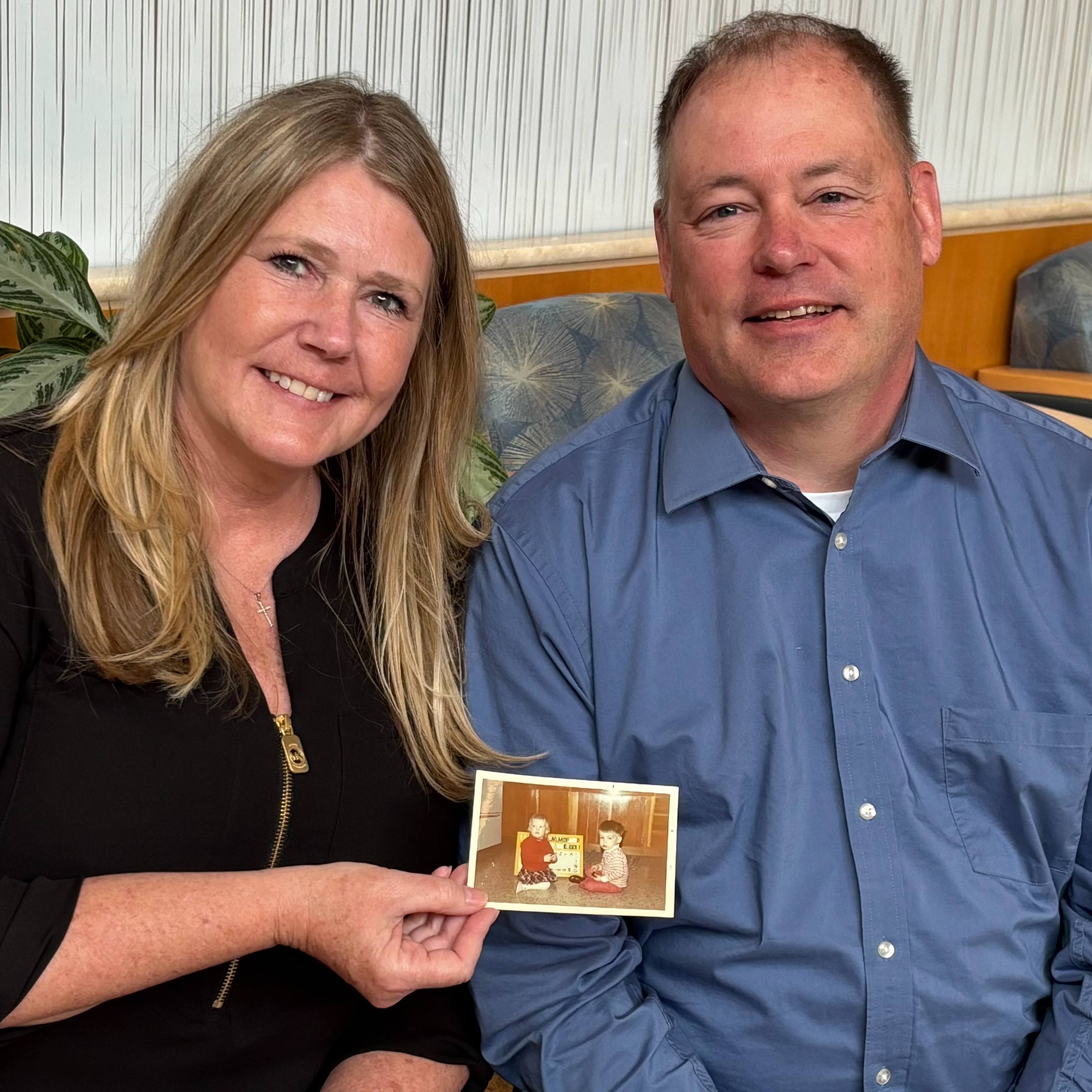It has been 2½ years since Andy Sandness was wheeled into an operating room at Mayo Clinic's Rochester, Minnesota, campus for a 56-hour marathon surgery to give him a complete face transplant.
Everything about his life changed that day. And at breakfast on a December morning in Rochester, Sandness says he is finally living the life he hoped for.
"I don't get the looks like I used to," he says. "I mean, I can just sit down, eat normally, drink normally."
He enjoys the little things in life.
"I mean, I can smell pretty good," he says. "I mean, my taste is better than my smell, for sure."
He enjoys the little things most others take for granted.
"What I like is just being able to smile and being able to have the lip movement and being able to kiss," he says.
Little things that a few years ago he didn't know would ever be possible for him to enjoy.
"I made a huge list of all my goals of what I wanted," Sandness says. "I wanted function more than anything with the aesthetic looks."
Watch: 2 years after face transplant, Andy Sandness' smile shows his progress
Journalists: Broadcast-quality video pkg (3:37) is in the downloads at the end of the post.
Please 'Courtesy: Mayo Clinic News Network.' Read the script.
They were ambitious goals considering the results of face transplants have been so variable and unpredictable.
"He says, 'Well, we're gonna connect all the nerves,'" Sandness says. "... I think where some of these [other] doctors have slipped is not connecting every nerve. So that's why my surgery took 56 hours."
The "he" Sandness refers to is Dr. Samir Mardini, the Mayo Clinic surgeon who led a team of dozens that performed Andy's face transplant. They spent more than 50 Saturdays over a three-year period planning and practicing every step of the surgery with the team of surgeons, nurses, surgical technicians and anesthesiologists.
They practiced the nerve surgery every time.
"We identified on the donor all the facial nerve branches supplying the area of the face that was transplanted," Dr. Mardini says. "We took pictures. We videotaped. We studied what every little branch of those nerves did for the face. And we did the same thing on our patient, on Andy."
Connecting all of them was a tedious process.
"So when we came to connect the nerves together, we had to make sure that every nerve branch matched the perfect nerve branch from the donor and the recipient, so that the function is exactly what Andy will try to do when he's doing his daily life," Dr. Mardini says. So if he wants to smile, he thinks about smiling. It goes from his nerve for the smile to the donor nerve for smile, and it creates a smile."
For Sandness, it was that tedious work connecting the nerves that he thinks made all the difference.
"I was in line one day at the grocery store and the guy says, 'Oh man, what happened,'" Sandness says.
It was soon after his surgery when his scars were more noticeable and the nerves were still regenerating.
"He's like, 'Did you get in a car wreck?' Like, no, man, it's a little bigger than that."
It was a significant moment for Sandness, though, because he could tell that it never occurred to the man that the face he was asking about didn't always belong to Sandness.
"That was our goal," Dr. Mardini says. "So success for us was measured in multiple fronts, but, ultimately, success is Andy walking into a store, not being noticed as someone abnormal in any way, talking to the person at the counter. They talk to him back. They don't think twice about him, and he moves on with his day. That's a success to us, and that's what we were able to achieve in Andy's case."
It's what Sandness always wanted: to be just another face in the crowd.
"Just going into a restaurant or stores, I mean, I feel normal," he says. "And nobody stares like they used to. I mean, I just sit down. I can talk. I can speak fairly clear."
"It's part of me. It's, like, my face."
The payoff from those extra hours in the operating room continues to grow 2½ years later.
"The nerves, they're still growing," Sandness says.
His smile serves as proof that the success of his face transplant surgery is still growing, too.
No longer does his face frighten kids. In fact, kids don't even notice him.
"There's no part of me that's uncomfortable anymore," Sandness says. "Like when I walk into a restaurant, I'm not uncomfortable or go into a store or see kids or anybody that used to scare me — like those situations where you try to avoid those situations. There's no situation that I don't want to be in anymore."
Watch: Transforming a life - Mayo Clinic announces its first face transplant
Watch: Mayo's first face transplant patient meets donor's family







